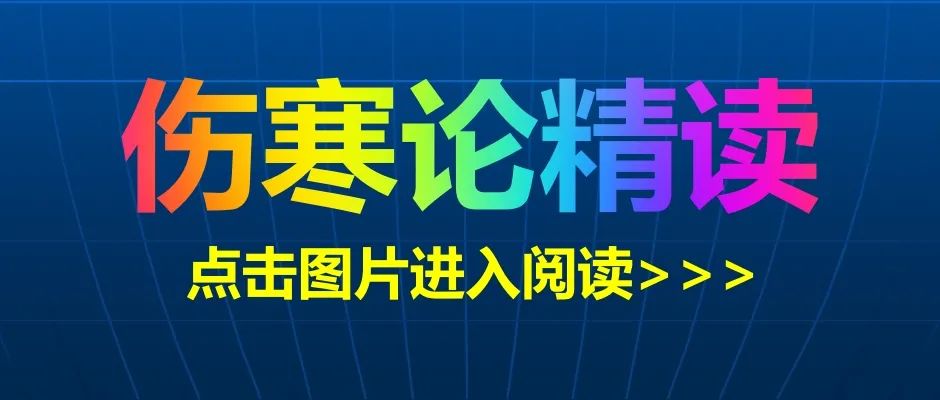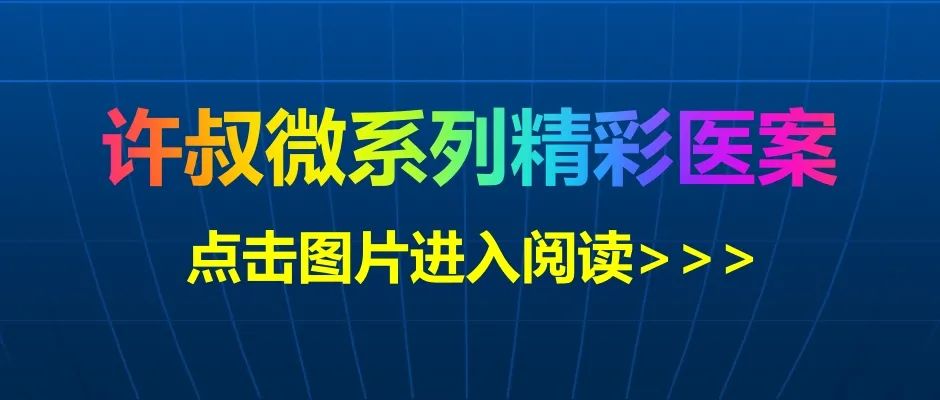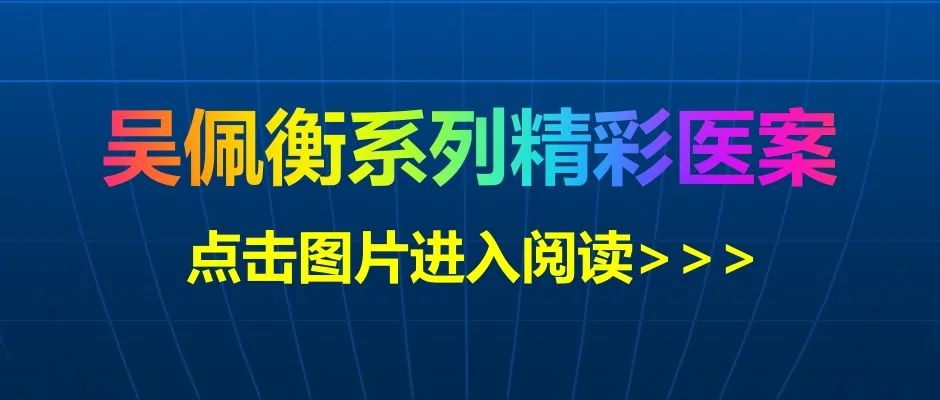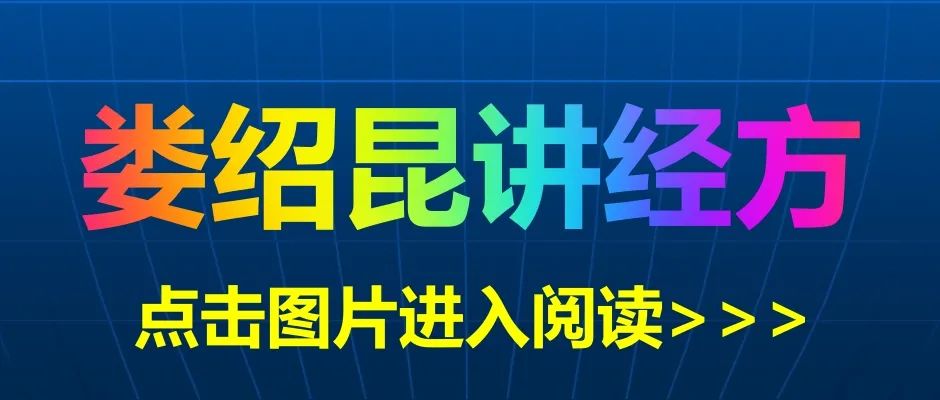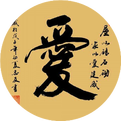Treatment of Lower Jiao Damp-Heat Syndrome (Part II)
Continuing from the previous issue: Treatment of Lower Jiao Damp-Heat Syndrome (Part I)
2. Heat Dominates Over Dampness1) Bladder Damp-Heat【Clinical Manifestations】 Fever, thirst, frequent and urgent urination, burning pain during urination, difficulty in urination, cloudy yellow urine, and in severe cases, blood in urine; tongue coating is yellow, greasy, and dry; pulse is rapid.【Pathogenesis Analysis】 This syndrome is due to damp-heat invading the bladder, with heat dominating over dampness, leading to obstruction of the water pathways. The excess heat injures the fluids, causing fever and thirst. The heat’s urgency forces the bladder, resulting in frequent and urgent urination, with burning pain during urination. Damp-heat stagnation obstructs the water pathways, leading to difficulty in urination. When damp-heat congeals, the urine becomes cloudy and yellow. Heat evil burns the blood vessels, causing blood in the urine. The yellow, greasy, and dry tongue coating indicates heat dominating over dampness. The rapid pulse is a sign of excess heat.【Treatment Method】 Clear heat and promote urination.【Formula】Ba Zheng San (Eight Correcting Powder) from Tai Ping Hui Min He Ji Ju FangChe Qian Zi (Plantago Seed) 1 jin, Qu Mai (Dianthus) 1 jin, Bian Xu (Polygonum Aviculare) 1 jin, Hua Shi (Talc) 1 jin, Shan Zhi Zi Ren (Gardenia Fruit) 1 jin, Gan Cao (Honey-Fried Licorice) 1 jin, Mu Tong (Akebia) 1 jin, Da Huang (Rhubarb, roasted and cut) 1 jin (Grind into powder, take 2 qian with one cup of water, boil with lampwick until reduced to 7 parts, strain and take warm after meals and before bed. For children, adjust the dosage accordingly. (Modern practice often uses it as a decoction.)【Formula Discussion】Che Qian Zi, Qu Mai, Bian Xu, Hua Shi, and Deng Xin are all cold and cooling in nature, effective in promoting urination and clearing heat.Mu Tong and Zhi Zi are bitter and cold, clearing heat and promoting the flow of the three burners, guiding heat out through urination.Da Huang is bitter and cold, assisting the other herbs in clearing and discharging heat evil, and has a cooling blood effect. Combined withHoney-Fried Licorice, it harmonizes the other herbs and prevents their bitter and cold nature from harming the righteous Qi. The combination of these herbs works together to clear heat and promote urination, allowing the bladder damp-heat to be expelled and the condition to resolve.2) Gastrointestinal Damp-Heat Stagnation【Clinical Manifestations】 Fever, nausea, fullness in the chest and abdomen, loose stools with a foul smell, yellow-brown color, yellow greasy tongue coating, and slippery rapid pulse.【Pathogenesis Analysis】 Damp-heat stagnation leads to internal heat accumulation, resulting in fever. Damp-heat obstructs the Qi mechanism, causing the spleen and stomach to lose their ability to ascend and descend, leading to nausea and fullness in the chest and abdomen. Damp-heat obstructing the spleen and stomach can cause dysfunction in transportation and transformation, leading to food stagnation, with damp-heat combined with food stagnation causing loose stools with a foul smell and yellow-brown color. The yellow greasy tongue coating and slippery rapid pulse indicate internal damp-heat and heat dominating over dampness.【Treatment Method】 Guide stagnation downward, clear and transform damp-heat.【Formula】Zhi Shi Dao Zhi Tang (Guide Stagnation Decoction) from Revised Common Cold TreatiseXiao Zhi Shi (Bitter Orange) 2 qian, Sheng Jin Wen (Fresh Silk) 1.5 qian (washed with wine), Clean Hawthorn Fruit 3 qian, Jian Bing Lang (Areca Nut) 1.5 qian, Thin Huai Mu (Magnolia Bark) 1.5 qian, Xiao Chuan Lian (Small Bitter Orange) 0.6 qian, Liu He Qu (Fermented Barley) 3 qian, Qing Lian Qiao (Forsythia) 1.5 qian, Lao Zi Cao (Lithospermum) 3 qian, Fine Mu Tong (Akebia) 0.8 qian, Sheng Gan Cao (Raw Licorice) 0.5 qian【Formula Discussion】 This syndrome is due to damp-heat combined with food stagnation in the gastrointestinal tract, thus it is not sufficient to use only clearing and transforming herbs; both clearing damp-heat and guiding stagnation downward must be applied. The combination ofDa Huang, Zhi Shi, and Hou Po forms the Xiao Cheng Qi Tang. AddingJian Bing Lang creates a bitter and pungent formula that has the effects of clearing heat, guiding downward, and promoting Qi flow.Shan Zha (Hawthorn) and Shen Qu (Fermented Barley) are digestive aids that can eliminate food stagnation in the gastrointestinal tract.Huang Lian clears heat and dries dampness,Lian Qiao lightly clears and disperses, allowing heat to be expelled outward; these two herbs combined withZi Cao work together to clear heat and detoxify.Mu Tong clears and benefits the three burners, guiding damp-heat out through urination.Sheng Gan Cao harmonizes the herbs and also clears heat. The combination of these herbs is designed to guide stagnation downward and eliminate damp-heat accumulation. However, damp-heat combined with food stagnation in the gastrointestinal tract is different from the syndrome of dry constipation in the large intestine; it cannot be resolved in one go, thus this formula can be taken continuously until the stools are no longer loose and damp-heat is completely eliminated, but the dosage should be light to prevent excessive bitterness and cold from damaging the spleen Yang. AsYe Tian Shi said: “When damp evil is internally trapped, it should be treated lightly. In cold damage, loose stools indicate that the evil has been eliminated, and it should not be purged again; in damp-warm diseases, loose stools indicate that the evil has not been eliminated, and the stools must become hard, so one must be cautious not to attack again, as dry stools indicate no dampness.” (from External Warm Diseases)【Literature Selection】“In treating warm disease heat symptoms, one often rushes to clear fire, neglecting internal stagnation. Not knowing that the stomach governs the muscles, if the stomach does not transform, the muscles cannot relax, and extreme cooling can lead to ice accumulation. This formula uses Xiao Cheng Qi combined withLian and Bing as the monarch, bitter and descending, effectively guiding internal stagnation. I useShan Zha and Qu to disperse internally; Lian and Zi to clear and disperse upward; Mu Tong to guide downward. Accompanied byGan Cao to harmonize the herbs. What opens, opens; what descends, descends, without needing to force it. Whenever I see stools pass and rashes appear simultaneously, I use this. This is a good formula for eliminating accumulation and treating the three burners.” (from Revised Common Cold Treatise – Zhi Shi Dao Zhi Tang – He Xiu Shan’s Commentary)【Commentary】 He Xiu Shan’s commentary clearly points out the rationale for treating gastrointestinal damp-heat stagnation using the method of guiding stagnation downward. His analysis ofZhi Shi Dao Zhi Tang is also quite thorough.3) Damp-Heat Dysentery【Clinical Manifestations】 Fever, thirst, diarrhea with abdominal pain, urgency with a feeling of heaviness, stools with pus and blood, burning sensation in the anus, yellow greasy tongue coating, and slippery rapid pulse.【Pathogenesis Analysis】 This syndrome is due to damp-heat obstructing the large intestine, manifesting as dysentery. The dampness and heat evil are compared, with heat dominating over dampness. Damp-heat steams and consumes the fluids, leading to fever and thirst. Damp-heat descending into the large intestine causes frequent diarrhea. Damp-heat stagnation leads to abdominal pain. Urgency is caused by the heat evil pressing down; the feeling of heaviness is a sign of dampness obstructing the large intestine, making it difficult to pass stools. Damp-heat accumulation leads to stagnation of Qi and blood, resulting in pus and blood in the stools. Damp-heat pressing down causes a burning sensation in the anus. The yellow greasy tongue coating and slippery rapid pulse indicate internal damp-heat, with heat dominating over dampness.【Treatment Method】 Clear heat, dry dampness, and cool the blood to stop dysentery.【Formula】Jia Wei Bai Tou Weng Tang from Wen Bing Tiao BianBai Tou Weng (Pulsatilla) 3 qian, Qin Pi (Fleeceflower) 2 qian, Huang Lian (Coptis) 2 qian, Huang Bo (Phellodendron) 2 qian, Bai Shao (White Peony) 2 qian, Huang Qin (Scutellaria) 3 qian Boil in 8 cups of water until 3 cups remain, divided into three doses.【Formula Discussion】 This formula combines Bai Tou Weng Tang from Shang Han Lun with Huang Qin Tang, removing licorice and jujube to form a new formula.Bai Tou Weng is bitter and cold, clearing heat, detoxifying, cooling the blood, and stopping dysentery, serving as the monarch herb in this formula.Huang Qin, Huang Lian, and Huang Bo work together to clear heat, dry dampness, and eliminate evil from the upper, middle, and lower burners. AddingQin Pi enhances the formula’s ability to clear heat, dry dampness, and stop dysentery.Bai Shao nourishes the blood and alleviates pain. The combination of these herbs creates an effective formula for clearing heat, drying dampness, and cooling the blood to stop dysentery.【Literature Selection】“For internal deficiency and downward descent, heat dysentery with heaviness, the pulse is small on the left and large on the right,Jia Wei Bai Tou Weng Tang is the main treatment.” (from Wen Bing Tiao Bian – Middle Jiao Chapter, Article 99)【Commentary】 This section discusses the treatment of damp-heat dysentery. “Internal deficiency and downward descent” refers to individuals with a weak constitution who are affected by damp-heat evil, descending into the lower jiao. The phrase “the pulse is small on the left and large on the right” indicates that the right pulse is large, suggesting that the evil comes from the upper and middle, while the left pulse is small, indicating that the lower jiao is affected by the evil, leading to hard and unyielding symptoms. Thus, we categorize it as a lower jiao damp-heat syndrome. The treatment of damp-heat dysentery usingBai Tou Weng Tang with Huang Qin and Bai Shao is actually a combination of Bai Tou Weng Tang and Huang Qin Tang, reducing licorice and jujube, resulting in a more effective treatment than using Bai Tou Weng Tang alone.【Case Study】 DysenteryMr. Huo, male, 35 years old,Initial Diagnosis on August 10, 1974 Fever, chills, dizziness, nausea, body aches, intermittent abdominal pain, one bowel movement with a small amount of pus and blood, laboratory tests showed a large number of pus cells and red and white blood cells, white greasy tongue coating with a thick root, both pulses slippery and rapid, with a thin and rapid pulse on the left. Urine is yellow, with irritability and anxiety. Excessive accumulation of summer dampness and heat is about to lead to dysentery. Using methods to differentiate and transform, aromatic herbs to dispel summer heat, and reverse flow to stabilize the situation, hoping to resolve summer heat on the surface, allowing dampness and heat to transform, leading to recovery from dysentery. Dietary caution is advised.Chen Xiang Ru 3 grams (added later), Su Ye 4.5 grams (added later), Huo Xiang 10 grams (added later), Ge Gen 8 grams, Ma Wei Lian 10 grams, Chao Guan Gui 3 grams, Pao Jiang 3 grams, Chao Bai Shao 12 grams, Jiao San Xian 10 grams, Lai Fu Zi 6 grams – one doseSecond Diagnosis on August 11, 1974 After taking the aromatic dispersing and transforming herbs, bitter and warm damp-transforming herbs, combined with guiding stagnation, the patient sweated all over, and chills and headaches were relieved, fever subsided, abdominal pain did not occur, and body aches significantly reduced. No bowel movement, tongue coating gradually transforming, root still thick, both pulses slippery, with strength in the wrist. This was originally due to summer heat accumulation obstructing and not transforming, pressing down on the intestines, leading to dysentery. Now using aromatic dispersing and transforming methods, summer heat is resolved, the Ying and Wei are adjusted, and damp-heat accumulation is gradually transforming, thus stabilizing the situation. Changing to methods of ascending and descending, combined with dispersing and transforming.Ge Gen 10 grams, Ma Wei Lian 10 grams, Huang Qin 10 grams, Mu Xiang 6 grams, Huo Su Geng 10 grams, Ban Xia 10 grams, Lai Fu Zi 10 grams, Jiao San Xian 10 grams, Bing Lang 10 grams – two dosesThird Diagnosis on August 14, 1974 After taking the reverse flow and stabilizing methods, ascending and dispersing, the patient’s fever subsided, abdominal pain and dysentery were resolved, tongue coating has transformed with a slightly thick root, and today the bowel movement has returned to normal, with no pus or blood in the stool. Only a feeling of fullness and heaviness in the middle, with poor appetite. This summer dampness accumulation is gradually transforming, the exterior and interior have been resolved, dampness evil has decreased but not completely eliminated, thus continuing with aromatic ascending and dispersing methods to improve the situation.Dietary caution is advised, avoiding sweet, sticky, and cold foods.Jing Sui Tan 10 grams, Fang Feng 6 grams, Ma Wei Lian 10 grams, Huang Qin 10 grams, Mu Xiang 6 grams, Ban Xia 10 grams, Jiao San Xian 10 grams – original formula for three doses, all symptoms resolved.【Commentary】 Traditional Chinese medicine theory holds that treating dysentery must also address the root cause. The causes of dysentery are often due to the mutual obstruction of summer heat and dampness, leading to heat accumulation and manifesting as dysentery. Initially, it is often due to summer dampness accumulation, and when dampness is not cleared, summer heat invades, obstructing the Wei Qi, leading to dysfunction in the three burners, resulting in dysentery. At this time, it is essential to urgently treat summer heat to open the Wei Qi, smooth the three burners, and resolve dampness evil, allowing the heat to be released, thus preventing the formation of dysentery. Traditional Chinese medicine often emphasizes the urgent need to resolve summer heat and transform dampness to guide stagnation, as resolving summer heat and transforming dampness can prevent the formation of dysentery, thus achieving recovery with a single herb, hence the term reverse flow to stabilize the boat.
I Copyright Statement
-
This article is excerpted from the Complete Works of Zhao Shaoqin
-
Author/Zhao Shaoqin. Compiled by Zhao Shaoqin Research Studio
-
Copyright belongs to the relevant rights holders. If there are any improper uses, please feel free to contact us.
-
If you like the works of Zhao Shaoqin, please support by purchasing genuine books. The reprint aims to promote classical medicine.
I Submission Email [email protected]
Series on Warm Diseases 【Click the text to read directly】:
| Introduction to Warm Diseases | Causes, Mechanisms, and Treatment of Warm Diseases |
| Overview of Warm Diseases | Classification and Differentiation of Warm Diseases |
| Warm Diseases – Wei Level Syndrome Treatment | Formation and Development of Warm Disease Theory |
| Warm Diseases – Qi Level Syndrome Treatment (I) | Warm Diseases – Ying Level Syndrome Treatment (I) |
| Warm Diseases – Qi Level Syndrome Treatment (II) | Warm Diseases – Ying Level Syndrome Treatment (II) |
| Warm Diseases – Qi Level Syndrome Treatment (III) | Warm Diseases – Ying Level Syndrome Treatment (III) |
| Warm Diseases – Qi Level Syndrome Treatment (IV) | Warm Diseases – Blood Level Syndrome Treatment (I) |
| Warm Diseases – Qi Level Syndrome Treatment (V) | Warm Diseases – Blood Level Syndrome Treatment (II) |
| Warm Diseases – Qi Level Syndrome Treatment (VI) | Warm Diseases – Blood Level Syndrome Treatment (III) |
| Overview of Damp-Heat Diseases | Warm Diseases – Blood Level Syndrome Treatment (IV) |
| Upper Jiao Damp-Heat Syndrome Treatment (I) | Middle Jiao Damp-Heat Syndrome Treatment (I) |
| Upper Jiao Damp-Heat Syndrome Treatment (II) | Middle Jiao Damp-Heat Syndrome Treatment (II) |
| Lower Jiao Damp-Heat Syndrome Treatment (I) | Middle Jiao Damp-Heat Syndrome Treatment (III) |
